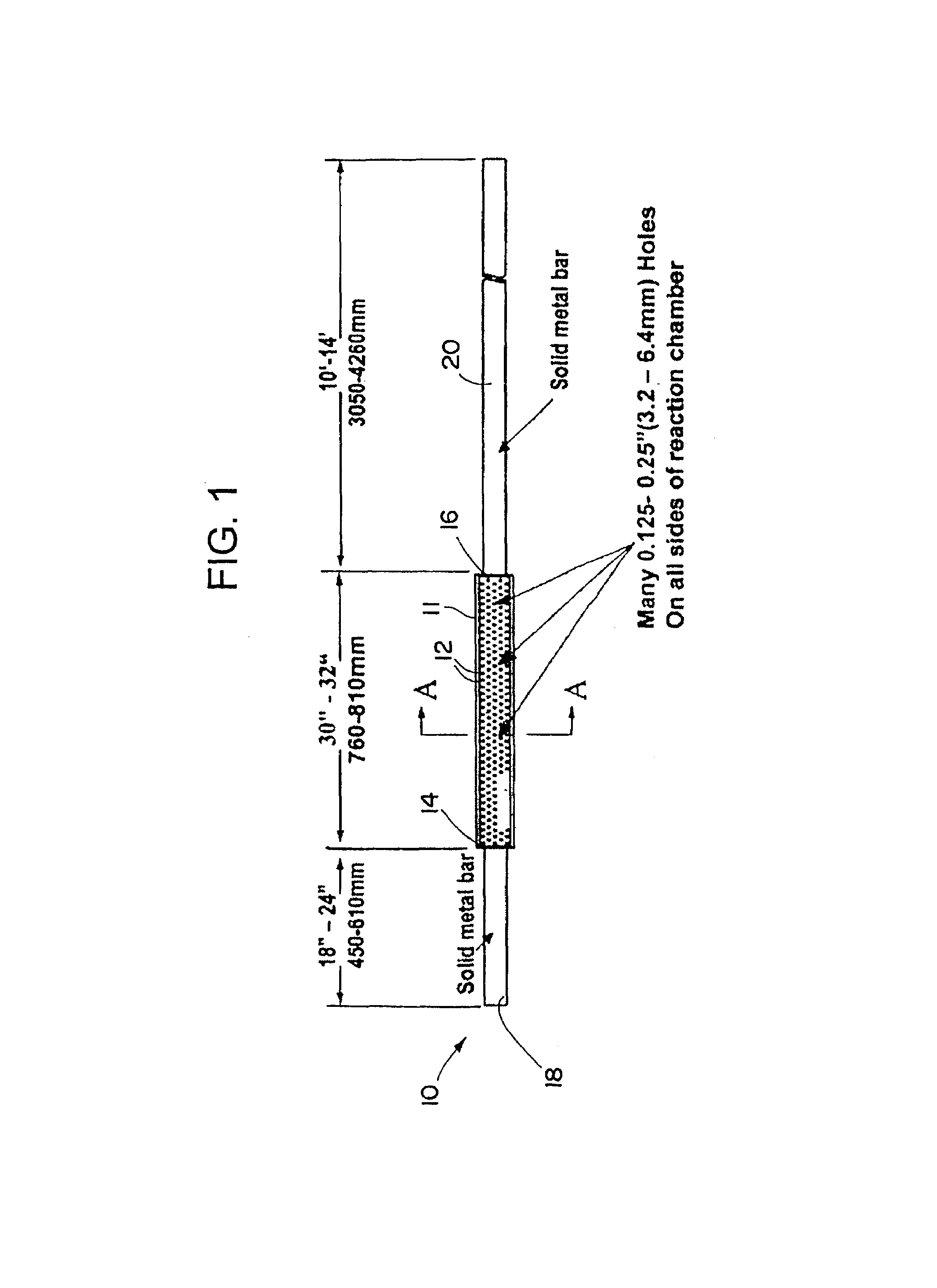Method for improving operational efficiency in clogged induction melting and pouring furnaces
a technology of induction melting furnace and operational efficiency, which is applied in the field of methods, can solve the problems of affecting the melting electrical efficiency, the inductor's electrical efficiency is affected immediately, and the furnace is useless, and achieves the effect of rapid softening and removal
- Summary
- Abstract
- Description
- Claims
- Application Information
AI Technical Summary
Benefits of technology
Problems solved by technology
Method used
Image
Examples
Embodiment Construction
[0029]A fabricated plunging assembly is used for immersion into channel or pressure pour furnaces used to melt gray and ductile irons, copper-base alloys, aluminum-based alloys and zinc-based alloys. The plunging assembly is fabricated from a steel tube into which holes are drilled. The actual diameter of the holes is not critical but the holes must be small enough to contain the briquetted flux tablets. The length of the steel bars is such that the shorter bar acts as a channel loop locator when the plunging assembly is inserted under the molten metal bath. The longer of the steel bars is used as a handle for plunging the entire assembly under the molten bath and must be long enough to allow insertion of the tube into the body of the channel loop.
[0030]The dimensions depicted in Drawings 1 and 2 are representative of plunging assemblies that have successfully been used to unclog restricted inductor loops and restore the furnace back to its original efficiency. The apparatus 10 is c...
PUM
| Property | Measurement | Unit |
|---|---|---|
| Length | aaaaa | aaaaa |
| Length | aaaaa | aaaaa |
| Fraction | aaaaa | aaaaa |
Abstract
Description
Claims
Application Information
 Login to View More
Login to View More - R&D
- Intellectual Property
- Life Sciences
- Materials
- Tech Scout
- Unparalleled Data Quality
- Higher Quality Content
- 60% Fewer Hallucinations
Browse by: Latest US Patents, China's latest patents, Technical Efficacy Thesaurus, Application Domain, Technology Topic, Popular Technical Reports.
© 2025 PatSnap. All rights reserved.Legal|Privacy policy|Modern Slavery Act Transparency Statement|Sitemap|About US| Contact US: help@patsnap.com


